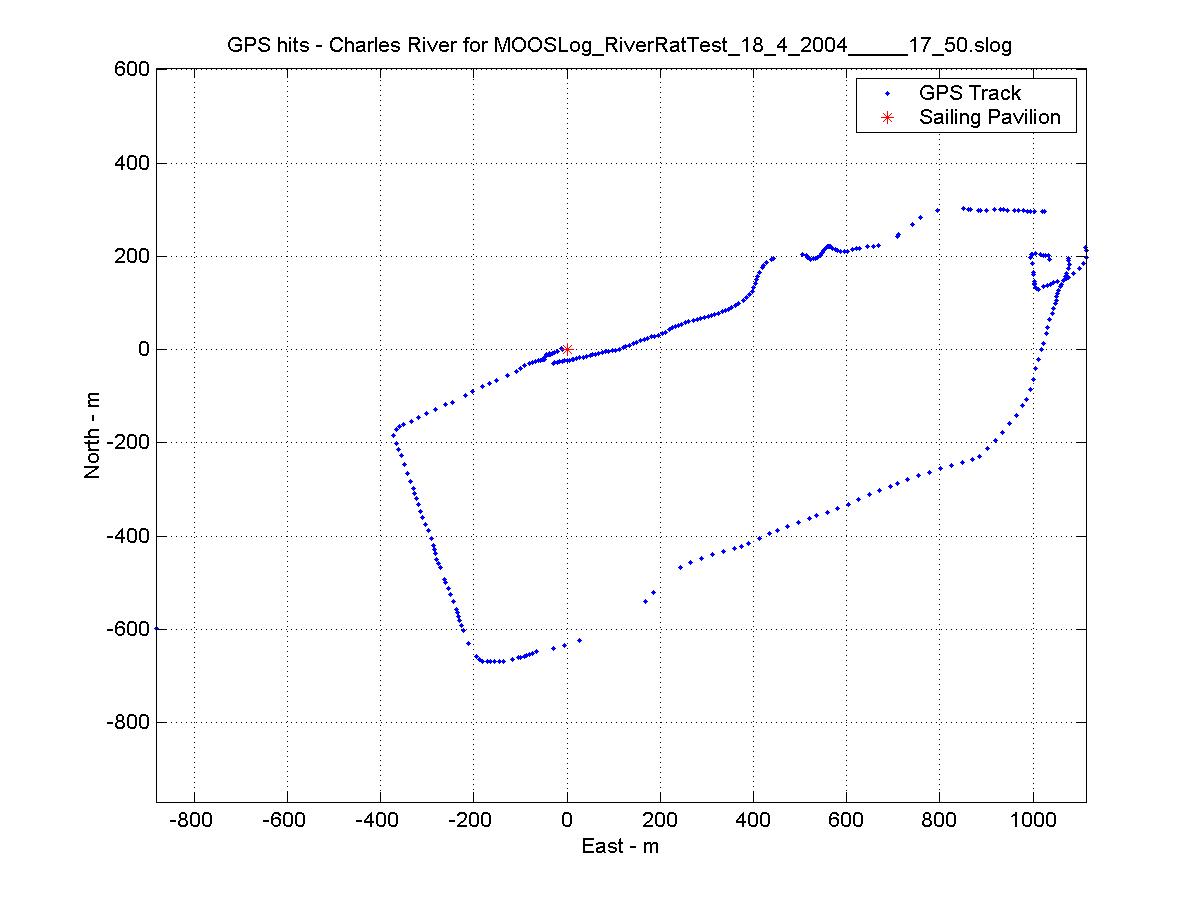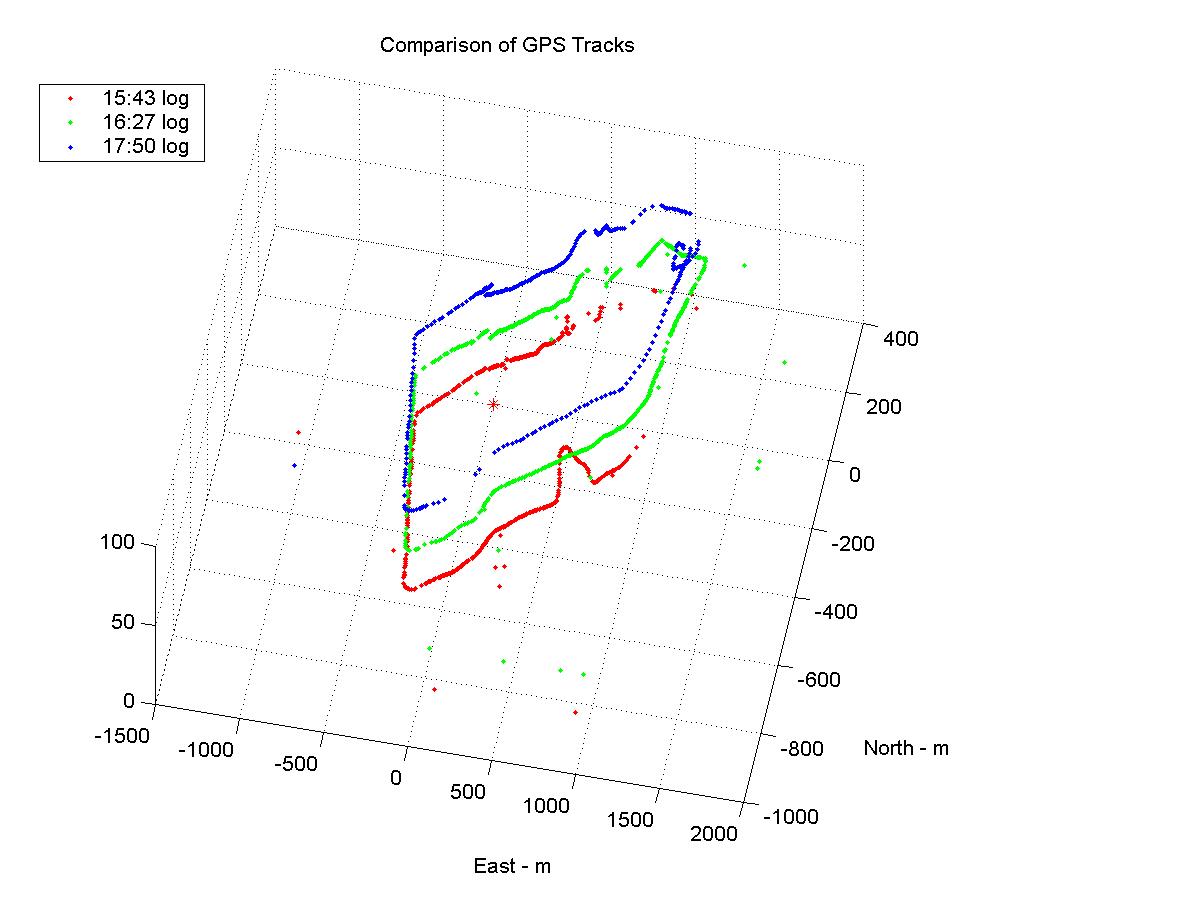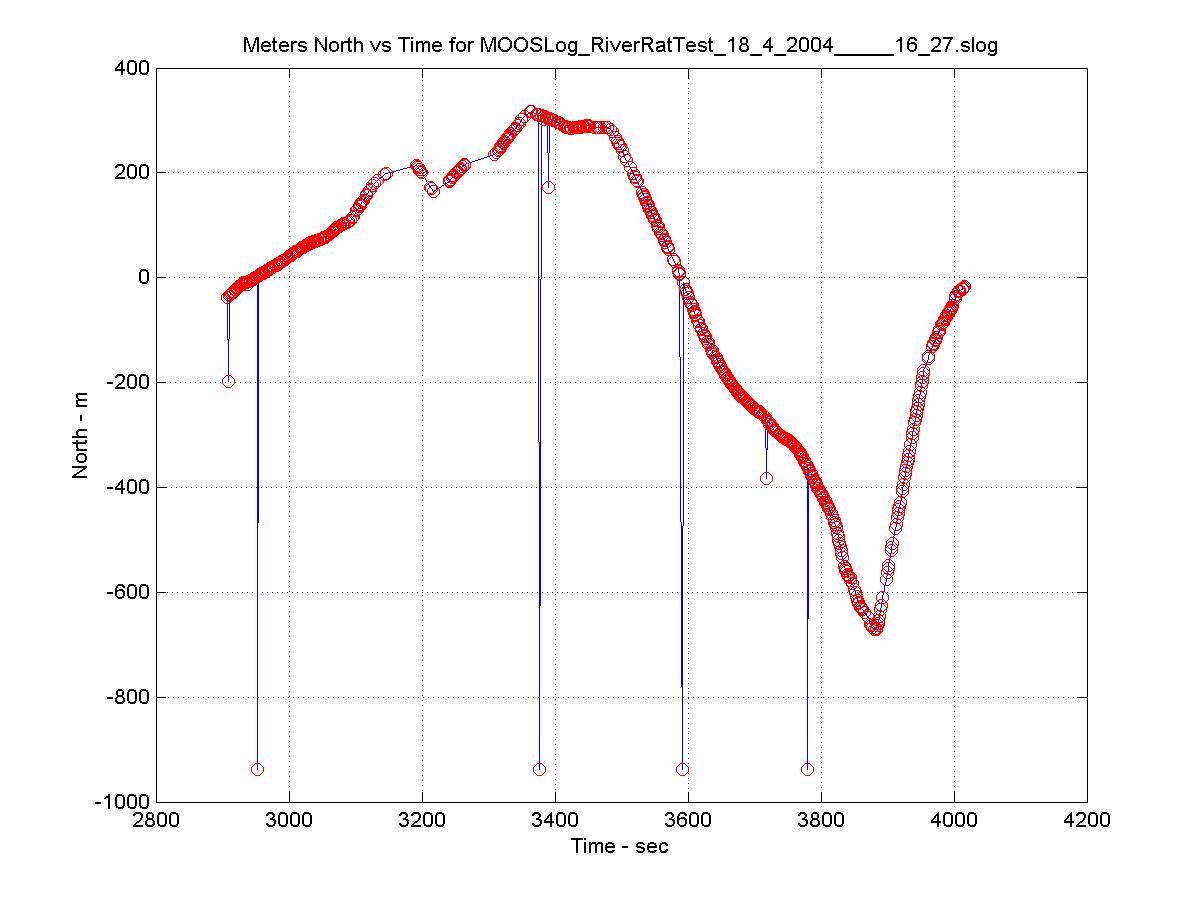- Understand how well the Aerocomm and Maxstream radios would
perform at a given height off the river's surface, thus simulating
different locations on a sailboat
- Compare the Maxstream and the Aerocomm from a power and channel capacity standpoint
- Map the dropout points on the river - places where we cannot see the RiverRat module effectively
- At least get us thinking about the current antenna setup and what potential problems there might be with antenna location
- Understand whether dropout was really the GPS not working
or just the radio not transmitting
- Get an idea as to how fast we can travel and still telemeter data
- Corroborate previoues testing with the MaxStream
Data Gathering
The laipac GPS unit was placed in a housing that contained both radios, so it was easy to switch from one radio to the next for the testing. Power was supplied by a 6V alkaline battery for the Aerocomm testing, and for the Maxstream portion a LiIon pack was used, along with a PC104 power supply to condition the input 15V down to 12V. Data was telemeterd back to a laptop PC that was running data logging software used on MIT's Autonomous Underwater Vehicles (MOOS - http://auvlab.mit.edu). The log files are listed in Table 1, and the key indicates whether the radio was placed in the bottom of the boat or at around 1meter above the river surface, near the steering console.
| bps | V | mW | |||
| MOOSLog | Radio | Baud | Voltage | TX Power | Radio Loc |
| 15_43 | Aerocomm | 57600 | 6 | 985 | B |
| 16_27 | Aerocomm | 57600 | 6 | 985 | M |
| 17_50 | MaxStream | 19200 | 12 | 140 | M |
| Radio Loc Key | |||||
| B | bottom of boat | ||||
| M | mid console | ||||
| Table
1 |
|||||



The data are simply offset by 25m in the vertical direction to increase clarity and make regions of dropout easier to compare

For each set of data collected, a MATLAB script was written to filter the outliers. An outlier was considered any value that was not within 2km of the Sailing Pavilion. More robust statistical filtering was unnecessary for this testing.






Observations
- For the setting we were using, Aerocomm's behavior is to send data regardless of succesful reception of data. This meant its data stream required far more filtering than the MaxStream's.
- Aerocomm data has far less dropout likely due to CRC
checking and only sending packets when it has positive comms
- This has the consequence of not getting GPS data, despite the sensor still functioning
- Higher power Aerocomms seem to have slight advantage, especially given bandwidth improvement
- Need to calculate throughput for 30 boats to really make the call here
- Also should consider the power budget again and make sure
the Aerocomms will not drain power - must consider duty cycle as a
function of bandwidth